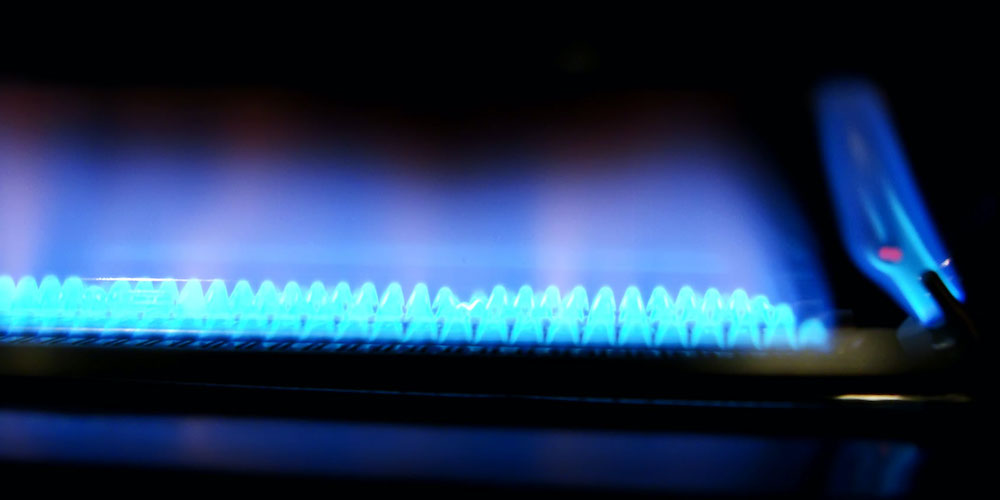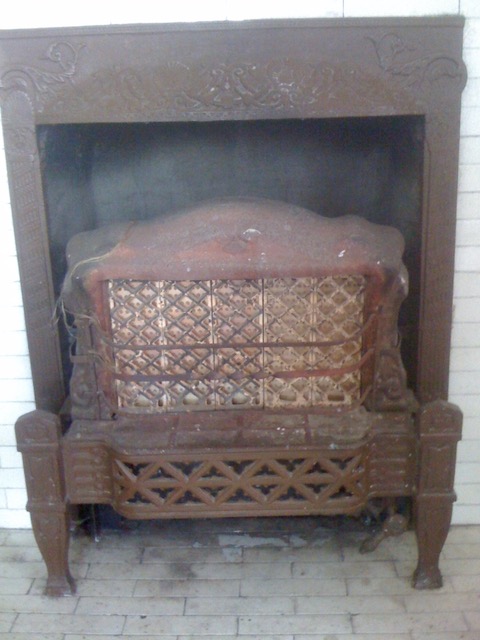Unvented Natural Gas Space Heaters Should Be Removed

My grandparents in Louisiana heated their home with natural gas space heaters in all the rooms of their home. I loved them because fires are just so fun! (I’m not going to tell you about that time my friend Bubba and I caught a field on fire, and the fire department had to come and put it out. Nor will I tell you about the fire that the two of us set in my mom’s clothes dryer. That’s really not relevant to this story at all.)
These atmospheric combustion appliances do create problems in homes from a building science perspective, but they don’t have the same type of problems that I wrote about with atmospheric combustion furnaces and water heaters a couple of weeks ago. The major problem is one that most people may not even recognize.
Beware of carbon monoxide
Carbon monoxide inside the home is certainly a danger, and that may be the best reason to get rid of unvented gas space heaters. Even if there’s no carbon monoxide, though, it’s just never a good idea to burn a fuel inside your home and leave all the exhaust gases in your home’s air.
Carbon monoxide results from incomplete combustion of natural gas. During complete combustion, natural gas combines with oxygen (O2) from the air and produces carbon dioxide (CO2) and water vapor (H2O). When the combustion process isn’t complete, you get more carbon monoxide (CO) and less carbon dioxide. With any kind of combustion in the home, you should have a low-level carbon monoxide monitor. (TruTech Tools sells two different low-level CO monitors*, both good.)
But CO isn’t the only problem
The often unrecognized problem with these heaters, though, is the huge amount of water vapor they can put in your home’s air. In my grandparents’ home, I think the gas space heaters worked well most of the time and didn’t produce much CO. They did produce a lot of water vapor, however.

Back when I was a home performance contractor, I got a call from someone who wanted me to come look at his grandmother’s home. I knew as soon as I walked up to the front porch that they had a big problem. They had the front door open, and condensation was dripping down the inside of the glass storm door. I found microbial growth on the walls and ceiling in the back bedrooms.
The problem was that she was heating the whole house, which was probably only 1,000 square feet or so, with two unvented natural gas space heaters. Because the house was poorly insulated and air sealed, there were plenty of cool surfaces for that water vapor, the front door being the most obvious. When you put water in materials that act as food (the paper on drywall, for example), mold spores will activate.
If you—or your grandmother—have unvented natural gas space heaters, the best thing to do is not use them if you have another source of heat. If you don’t have another source of heat, it’s best to start your search for a replacement right away. This also applies to ventless gas fireplaces. Unvented combustion isn’t good for a home’s indoor air quality, durability, or safety. And that’s even when they’re operating perfectly.
Allison A. Bailes III, PhD is a speaker, writer, building science consultant, and the founder of Energy Vanguard in Decatur, Georgia. He has a doctorate in physics and writes the Energy Vanguard Blog. He is also writing a book on building science. You can follow him on Twitter at @EnergyVanguard.
Related Articles
Don’t Compromise — Get a Low-Level Carbon Monoxide Monitor
A Ventless Gas Fireplace Is a Liability
Bob Vila and the Vent-Free Gas Fireplace — A Sorry State of Affairs
* This is a TruTech Tools affiliate link. You pay the same price you would pay normally, but Energy Vanguard may make a small commission if you buy after using the link.
Photo of blue flame by warrenski from flickr.com.
Comments are closed.
This Post Has 7 Comments
Comments are closed.

My aunt in south Georgia had
My aunt in south Georgia had one of these in every room, exactly like the one you’ve pictured, and they were in use for decades. She’s gone now and the house was remodeled years ago. Not sure what the owners did with them. Its unnerving to think how little we’ve understood how heating systems, ventilation, insulation, combustion safety, etc., actually ought to work, and for so many years. But good thing that we have people like yourself finally explicating the science behind the practice and getting the word out on proper practices and safety. So thank you, Allison!
I would assume the same would
I would assume the same would be true for these non-vented gas fireplaces. Yeah the salesman says it’s safe, but is it really?
John, unnerving yes, but
John, unnerving yes, but understandable, too. We’ve had open fires in our homes since the days when we lived in caves. The problems with this have crept up on us in recent times as we tightened up and insulated our homes and switched to more hydrogen rich fuels. But we know what to do now, so it’s time to get rid of unvented combustion inside the building envelope.
Josh, yes, the same holds for unvented gas fireplaces. They’re banned in some green building programs and should be banned by code, too.
Many years ago, my husband
Many years ago, my husband installed 2 gas space heaters which had, apparently, belonged to his dad, in our home. They are hooked up to the gas line. He is too ill now to maintain them, and I don’t feel safe using them. Who can I call to remove them?
In regards to the unvented
In regards to the unvented gas fireplaces….is there another option? We have this installed but not in an original fireplace. We need an alternative heat source.
Thoughts?
Thank you.
I installed a ventless
I installed a ventless natural gas space heater with ODS three years ago and have had none of the problems you suggest. We moved into a home with a furnace old enough to still have a pilot light and went through filters like they were toilet paper. Now it runs half as much which not only saves us money on heat (ventless is 99.9% efficient), but we no longer need to continuously fill and run two portable humidifiers that we did before. Those who follow the directions which disclose the humidity issue as why these are NOT to be the primary heat source for a home should have no problem. The balance between the furnace and space heater is easy enough to adjust.
my unvented space heater is
my unvented space heater is producing a smell like propane gas. It is several years old and in used regularly and often in the winter. Why does it produce a propane gas odor now when it didn’t before?